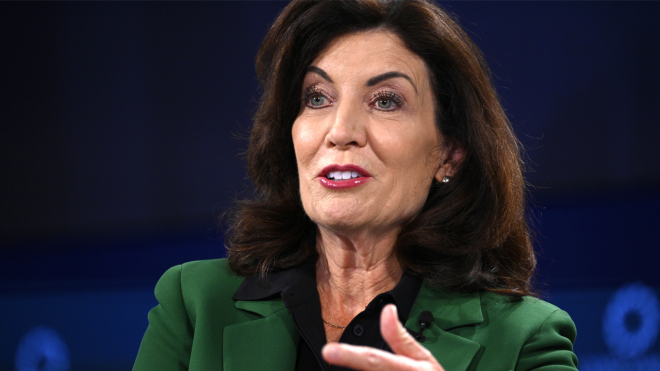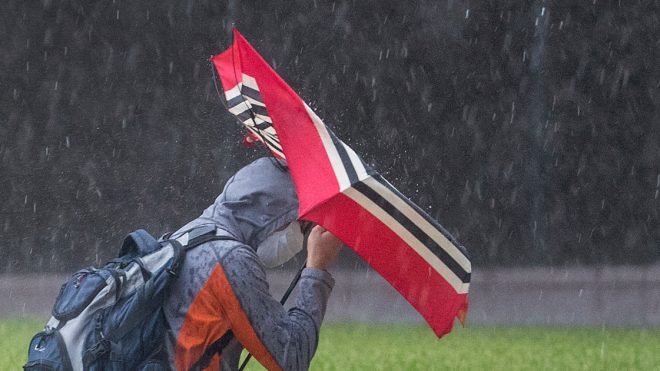Clinics for the Treatment of Addiction DIFFICULTY IN KEEPING UP WITH COVID-19
25 March 2020 | Elizabeth Brico Liquid Methadone at the CAP Quality Care clinic in Westbrook, Maine, which provides methadone treatment as part of the substance recovery process. (Photograph by Whitney Hayward/Member of the Staff) I have just witnessed my husband leaving the house. Not directly to his job as a cook, as his restaurant is closed due to the pandemic, but to his opioid treatment providera facility legally permitted to dispense methadone for the treatment of opioid addictions, so he can receive his daily dose before the doors close for the day.
Without his medication, he would suffer from weeks of excruciating opioid withdrawal symptoms. My husband is among the hundreds of thousands of Americans who rely on medications such as methadone and buprenorphine to combat opioid addiction and avoid withdrawal, and who now wonder whether they will continue to have access during the novel coronavirus pandemic, or risk daily exposure to the virus by visiting facilities.
Receive Talk Poverty in your email inbox.
Yes, these facilities continue to prescribe and dispense these medications, and patients should not lose access to medications for opioid use disorder during this crisis. Methadone and buprenorphine are classified as essential medicines by the World Health Organization; therefore, their continued availability should be a top priority. In an effort to reduce clinic visits, various government agencies have issued guidelines and legal exceptions to a number of rules and regulations that typically restrict access to these medications.
However, there is also a much longer and more complex response.
Despite the fact that methadone and buprenorphine treat the same disorder in relatively similar ways, they are subject to vastly different sets of rules and regulations. On the [buprenorphine] side, a week is typically the minimum dosage prescribed. It would be simple to give these patients a prescription for two weeks or to call in an extra prescription with a refill. On the [methadone] side, things get hairy, according to Zac Talbott, president of the National Alliance for Medication-Assisted Recovery (NAMA-R), who has direct experience as a patient and operating facilities that provide these medications.
Any physician or advanced practice registered nurse who has completed an eight-hour waiver course may prescribe buprenorphine. This means that patients can access it in a variety of settings, such as primary care, psychiatry, gynecology, and addiction treatment centers. Methadone, on the other hand, is only available from licensed opioid treatment providers (OTPs), also known as methadone clinics, for the treatment of addiction. It is governed by a complex web of federal, state, and individual rules, regulations, and policies. Both medications must be available, as methadone is preferable for those with higher tolerances to opioids and does not require patients to undergo withdrawal prior to administration.
Talbott predicted that the responses of OTPs will be extremely diverse. Patients must understand that this may vary from state to state due to state authorities.
Responses are as diverse as perspectives on addiction. State Opioid Treatment Authorities, who make decisions at the state level regarding medications for opioid use disorder, have looked to the federal Substance Abuse and Mental Health Services Administration (SAMHSA) for guidance on how to respond to the novel coronavirus outbreak. This federal agency regulates the availability of medication to be taken at home rather than in a clinic (also known as “takehomes”) and numerous other methadone regulations. Elinore F. McCance-Katz, the administrator of SAMHSA and assistant secretary for mental health and substance use, told TalkPoverty via email that SAMHSA and HHS are continuously collaborating with states and communities facing these problems. We have provided flexibility to the states to ensure that individuals with opioid use disorders continue to receive their medication. Additionally, we have endeavored to expand our capacity to provide services via telehealth modalities whenever possible.
Washington state, where the first confirmed cases of COVID-19 were identified in the United States, was the first state to be granted the ability to dispense extended takehomes of up to 14 days to specific populations without first applying for individual permissions, as is normally required.
As of September 9th, the Washington State Opioid Treatment Authority has issued seven different types of blanket takehome exception requests that programs can request per federal law to allow a large majority of individuals who are considered stable—which is determined at the discretion of each program’s medical director—to move beyond daily or near-daily dosing. There are no federal regulations for buprenorphine, so [these patients] can be moved to whatever level is deemed safe.
However, this does not imply that all patients in Washington will receive these benefits. Tanna, a patient who resides between Seattle and Tacoma, reported that she has not been given any take-home doses. She has only been with that provider for a little more than three months, so she is still considered a new and therefore unstable patient, even though she transferred from another clinic where she had earned a month of takehomes.
Additionally, she must attend four hours of group therapy per month. Last week, there were eight people in her group, and she did not observe any special precautions due to the virus.
At the dosing window, hand sanitizer has been added, the trash has been moved slightly, the nurses are now wearing gloves, and the window screen has been lowered, she explained.
On March 16, SAMHSA updated its guidelines to state that all states with declared states of emergency could request blanket exceptions to provide stable patients with 28 days of takehome medication and less stable patients with 14 days of takehome medication if they are still able to safely handle the additional medication. In states that have not declared a state of emergency, each clinic may apply for similar exceptions for their patients.
The updated SAMHSA guidelines allow states and providers greater flexibility to dispense take-home medication, but that does not imply that every clinic will utilize this flexibility to its fullest extent or apply it to every patient.
Mark Parrino, president of the American Association for the Treatment of Opioid Dependence, stated that it may be necessary to provide patients with 14-day supplies of opioids. However, it should be on a case-by-case basis We want to allow quarantine to stop the spread of the disease, but keep in mind that we’re dealing with opioids. When administered to unstable patients, opioids can be hazardous. We don’t want to flood the community with large quantities of methadone in the hands of unstable patients who may not be able to cope with a two-week supply.
People who are new to treatment and who have unstable housing, unstable psychosocial situations, who may be continuing to use other substances, and who have underlying health concerns are the least likely to receive takehomes; these factors indicate instability in their lives. Keith Brown, a harm reduction advocate currently working on the COVID-19 response at the county level in Schenectady, New York, argued that these individuals should receive take-home kits immediately. In the event of a public health emergency, individuals will need to determine what is prudent. Having several hundred patients visit a clinic daily is a transmission nightmare.
It is impossible to predict what each state and clinic will do with their expanded discretionary authority. Patients and providers are reporting responses that are as diverse as opinions on addiction.
The medical director of REACH, a harm reduction-based buprenorphine clinic in Ithaca, New York, Justine Waldman, has begun providing one and two month scripts to her buprenorphine patients, giving longer scripts to those who have difficulty getting to the office or a history of missing appointments. She prioritizes patient access and health over surveillance. She emphasized that this is an entirely new situation that is constantly evolving.
We may decide tomorrow that the current method is ineffective. She stated that we must really band together and take things day by day.
Jana Burson, the medical director of an OTP in North Carolina, stated that while her clinic does not offer extended takehome periods to the majority of patients, they do implement measures to help keep the facility sanitary and enforce social distancing while patients are present. For instance, the chairs in the lobby have been separated by at least six feet, and some counselors with smaller offices are relocating individual counseling sessions to larger rooms. They are disinfecting chairs, door handles, countertops, and other shared surfaces thoroughly.
In a public health emergency, individuals will be required to determine what makes sense. Vanessa, a North Carolina patient, reported that her clinic was not dispensing any additional takehome medications. She usually receives takehomes on Saturday, Sunday, and Monday, but on this Monday she was called in for a drug test and bottle check, a practice observed by some clinics in which they count patients’ takehome bottles. She described her clinic as operating as usual, with the exception of staff members taking patients’ temperatures. She noted that her temperature was not taken during the drug screening. She informed me via text message on Thursday morning that she would be given seven takehomes, but would have to pay for them herself.
Stephanie, a patient in Pennsylvania, reports that she has continued to receive six takehome medications, but that her group meetings and individual counseling sessions have been canceled until further notice. Her counselor responded that for the clinic to close, it would have to be the end of the world and there would be zombies, but conceded that they were giving medically fragile patients extra takehome medications.
Emily, who has hepatitis C, was not offered take-home doses by her Lexington, Kentucky clinic, but she reported that all patients are being questioned about potential symptoms upon entering the building. People who report feeling ill are dosed in their vehicles, and only five patients at a time are permitted to enter the building. Telephone-based individual counseling sessions have replaced canceled group sessions.
Samantha, a pregnant patient in Central Florida, reported receiving 13 takehome medications and having a doctor’s appointment canceled so she would not have to go in an extra day.
In South Florida, my husband Ricardo still receives daily dosing, but his clinic is advising patients to be prepared to pay in advance for two weeks’ worth of takehome medications. For my husband, this translates to a cost of $224. The price for patients at other clinics can vary in either direction, but typically not by a significant amount.
My husband’s experience illuminates an additional concern for patients taking these medications. For some, extended scripts result in increased up-front earnings. Some methadone patients who pay for their medication out of pocket are only able to do so daily, relying on cash tips or weekly paychecks. Patients who are accustomed to paying for one or two weeks of Buprenorphine may not have sufficient funds for a 30-day prescription. Patients whose medications are covered by grants or insurance may face limits on the number of doses covered at one time, leaving them to pay for additional doses out of pocket. If they cannot pay, clinics are not required to administer medication.
Because buprenorphine prescribing is subject to fewer stringent regulations than methadone prescribing, it is easier for providers to adhere to social distancing recommendations while keeping patients adequately medicated. Numerous providers have resorted to telemedicine. On March 17, the Secretary of Health and Human Services lifted restrictions on telemedicine practices that prohibited Medicare patients from using cell phones in their homes or shelters. On the same day, the Drug Enforcement Administration waived requirements that buprenorphine patients have an initial in-person visit, permitting new buprenorphine patients to engage in telemedicine from the beginning.
Even with these changes, however, economically disadvantaged patients may have difficulty utilizing telehealth options. Not all of my patients have the necessary smartphones or minutes for telehealth. When asked about telehealth, their response was “absolutely not,” said Waldman.
As Talbott emphasized, the response to this crisis will vary between states and clinics, with prescribers and medical directors having broad discretion. As states and counties continue to evaluate the impact of COVID-19 on their communities and how they wish to respond, the situation is constantly evolving.
Burson stated that his current primary responsibility is to reassure patients that they will not be abandoned.
A previous version of this article incorrectly stated that all registered nurses could prescribe buprenorphine. Only registered nurses with advanced practice may prescribe this medication.
RELATED
–
– Initially, an opioid dependence. After that, a Life-Changing Criminal Record.
– The Coronavirus Is Expanding. Your waiter cannot stay at home to stop the problem.
Coronavirus Health Care methadone Substance Use Dependence
Conclusion
Methadone patients have to report for medication daily, but the coronavirus pandemic is making that increasingly difficult.













